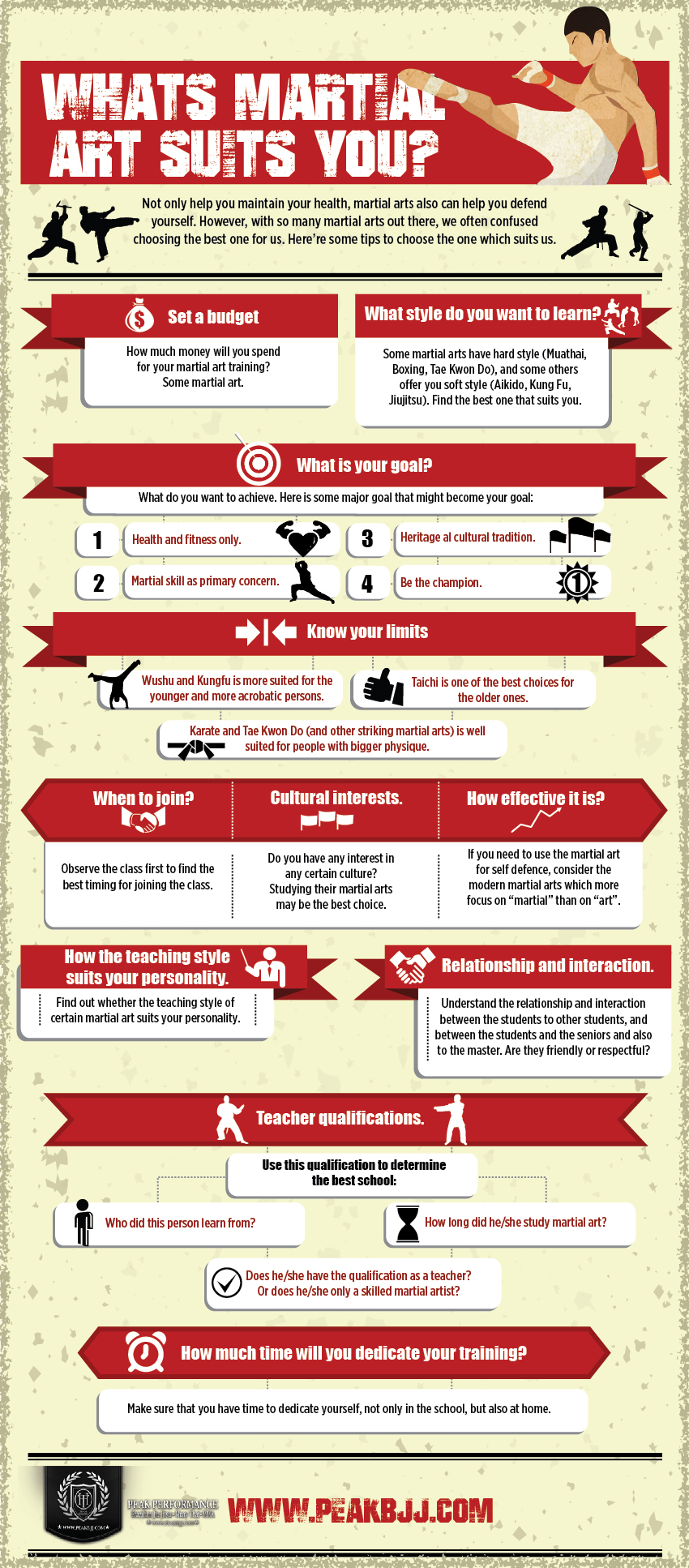Exploring The Rich Heritage And Spiritual Capacities Of Martial Arts: An Extensive Evaluation
Exploring The Rich Heritage And Spiritual Capacities Of Martial Arts: An Extensive Evaluation
Blog Article
pride martial arts Composed By-Moesgaard Francis
Enter the ancient world where martial arts were substantiated of necessity in diverse areas. Cultures crafted unique combating styles linked with historical contexts. Strategies progressed over centuries through dedicated method and cultural exchanges. Today, modern martial arts mix standard components for optimal effectiveness. Philosophically, martial arts stress self-control, self-improvement, and harmony. Respect, humility, and balance are foundational concepts assisting specialists in the direction of growth and strength. Explore the depths of this rich history and approach to reveal the extensive impacts shaping this long-lasting discipline.
Beginnings of Fighting Style
Fighting style originated in numerous regions all over the world, evolving as functional battle systems to resist threats. These old battling styles were established out of need, with each culture crafting strategies fit to their special settings and difficulties. From the grappling arts of Jujutsu in Japan to the striking strategies of Martial art in China, martial arts were deeply linked with the historical, social, and social textile of their corresponding societies.
In Japan, the samurai course polished martial arts like Kenjutsu, the art of the sword, which later on progressed into the much more promoted kind of Kendo. On the other hand, in Brazil, Capoeira became a blend of dancing and battle, developed by enslaved Africans as a means to stand up to injustice. Each fighting style lugs with it a rich history and viewpoint, showing the values and ideas of the people who exercised them.
As you look into the origins of martial arts, you reveal a tapestry of human resourcefulness, resilience, and the unrelenting spirit of warriors throughout time.
Evolution of Strategies
Through centuries of practice and improvement, battle strategies within different martial arts have undergone a profound advancement. From old designs like Martial art and Karate to a lot more contemporary self-controls such as Brazilian Jiu-Jitsu and Krav Maga, the advancement of techniques has actually been driven by a combination of social influences, functional applications, and technical innovations.
One substantial element of this evolution is the cross-pollination of methods in between various martial arts. For instance, strategies from traditional Japanese Jiu-Jitsu were incorporated into the creation of Judo by Jigoro Kano in the late 19th century. This blending of styles has actually brought about the growth of crossbreed martial arts like Mixed Martial Arts (MIXED MARTIAL ARTS), which combine components of striking, grappling, and entry strategies.
In addition, the evolution of strategies has actually been formed by the enhancing focus on efficiency and performance in fight. Professionals have continually sought to refine their techniques via strenuous training, trial and error, and competition, causing the development of extremely specialized and efficient battling styles. Overall, the evolution of strategies in martial arts reflects the vibrant nature of battle and the recurring pursuit for improvement and development.
Thoughtful Structures
Exploring the underlying philosophical concepts of martial arts provides insight into their core values and leading ideas. At the heart of several martial arts self-controls is the concept of discipline itself. By educating your body and mind to work as one natural device, you cultivate technique that prolongs beyond the dojo or health club right into daily life. https://troyfezvo.bloggosite.com/36777764/comprehending-the-distinctive-features-of-martial-arts-and-protection-a-detailed-evaluation encompasses respect, humbleness, and self-constraint, shaping not just your physical capabilities but additionally your character.
Another essential thoughtful structure in martial arts is the concept of constant self-improvement. The journey of mastering a fighting style is perpetual, with professionals frequently making every effort to much better themselves, both literally and mentally. This concentrate on growth promotes durability, perseverance, and a growth way of thinking that can be related to all elements of life.
Furthermore, martial arts emphasize the significance of consistency and balance. Techniques are designed to use an opponent's power versus them, highlighting the concept of generating and redirecting pressure rather than meeting it head-on. This philosophy encompasses social partnerships, advertising tranquil resolutions and mutual understanding. By accepting these philosophical structures, martial musicians not only improve their combat skills yet also cultivate a way of living centered on personal development, regard, and harmony.
Final thought
In conclusion, the history and philosophy of martial arts provide a rich tapestry of practice, technique, and self-improvement.
Consider instance the tale of Bruce Lee, who revolutionized martial arts by blending different designs and ideologies to develop his own distinct form of Jeet Kune Do.
Through commitment and technology, martial musicians continue to push boundaries and influence others to reach their complete potential both in fight and in life.
